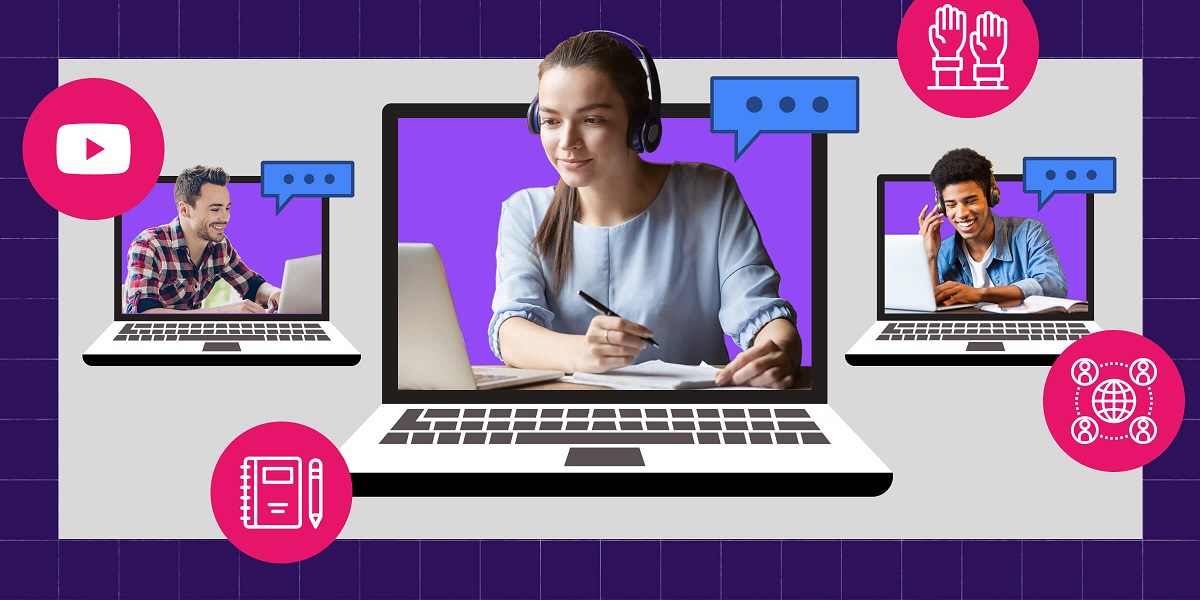
How Software-Based Learning Is Shaping Education
- By Aaron Smith
- 07-06-2022
- Software
Both in and out of the classroom, educational software is transforming how learning happens. Not only is using cutting-edge software in an educational setting beneficial, but in today’s tech-driven world, it’s absolutely crucial to the short and long-term success of the next generation. Children need to be familiar with technology in order to keep up in an ever-evolving world, and incorporating software-based learning into the curriculum is the key to accomplishing that goal. Here’s a look at how software is changing the educational sphere.
1. Accessibility
These days, virtually every industry—from hospitality to food—relies on software-driven systems, and the educational field is certainly no exception. The Covid-19 pandemic made it abundantly clear that traditional, in-person learning isn’t always feasible—or even the best option. Communications software empowers teachers to connect with their students remotely.
There’s no doubt that using remote learning platforms will continue to be a popular option for students of all ages. Even in traditional classrooms, if a student is absent, they can access the day’s materials so they don’t end up with a mountain of homework when they return to class. Cloud-based software enables anyone to log in with the proper credentials from anywhere in the world, ensuring that a missed day of school doesn’t mean the student misses out on the day’s lessons.
2. Gamification
Getting children excited about learning can be a difficult task. Today’s educational software often features games that make learning genuinely fun and engaging for participants. Besides being a powerful motivational tool, teachers can utilize features like badges and point systems that can be used as part of the grading process while also helping students to visualize their progress in real-time.
Beyond computer or mobile-based gaming, teachers can even incorporate virtual reality in the classroom. Of course, that doesn’t mean giving students a headset and allowing them to roam free in the metaverse! There are plenty of educational applications available. For example, National Geographic offers virtual field trips that allow users to explore and learn about various locations around the world.
3. Personalization
Educational software shapes how children learn, as well as what they learn. Because not all children learn at the same pace, teaching all students the same lessons at the same time isn’t the best option, but until relatively recently, it was the only option.
Today, teachers can use semi-autonomous software catered to each individual’s needs. Of course, that doesn’t mean the teacher’s role becomes irrelevant—far from it! Instead, the teacher can provide personalized guidance in real-time, as needed.
This approach actually makes it possible for teachers to be more effective. In the past, they were only able to provide insight into the day’s single lesson, and providing one-on-one guidance often meant working with struggling students after class. Using software that caters to individual students empowers teachers to better hone in on each student’s learning style and level.
Besides delivering a more well-rounded curriculum, teachers can provide students with personalized homework assignments that focus on specific aspects of the day’s lesson. Say one student is struggling with math and another with science. Instead of assigning the whole class math homework, the teacher can direct each student to complete relevant tasks via cloud-based learning platforms.
4. Automation
Automation is becoming increasingly common in business settings, but it can be effective in classroom settings too. Processes that once required significant time and effort can be handled by automation software, reducing the teacher’s workload and maximizing productivity.
For example, instead of calling attendance every day, students can log in on a tablet when they enter the classroom. Instead of having students bring home permission slips before a field trip, parents can authorize permission through the platform. Instead of handing out and grading tests and quizzes, teachers can let the platform calculate the data.
Automating tedious processes allows teachers to focus on the more hands-on aspects of their job while also creating more time for learning. This kind of efficiency boost naturally makes each day more productive, and over time, that saved time really adds up.
5. Monetary Savings
It’s no secret that schools don’t have unlimited budgets. One might assume that advanced technology would require significant, out-of-reach spending, but that’s simply not true. Both hardware and software are more affordable than ever, and they tend to be one-time investments, in contrast to other learning materials—like art supplies or textbooks—that need to be replaced on a regular basis.
While it’s true that the initial investment can be relatively steep compared to pencils and paper, it’s important to remember that these systems can be used for all students, year after year. You might be surprised by how economical getting set up can be, especially if you take advantage of government funding programs.
Google Chromebooks are frequently used in classroom settings due to their affordability and ability to run educational software. Beyond the hardware, custom educational software is more affordable than ever. Programmers can utilize low code app development to build robust educational platforms at a fraction of the cost of software written from scratch.
The Future of Education Is Bright
As you can see, today’s students and teachers alike can benefit drastically from software-based learning systems. It’s clear that modern education is only going to continue evolving as new technologies emerge, so now is the time to embrace the current options available, while also keeping a close eye on what the future holds. Every student of every age deserves the opportunity to maintain pace in a fast-moving world. This is an exciting time for learners, teachers, and society as a whole.
Recent blog
.png)
Top 03 Audio Enhancers to Enhance Your Voice in Minutes
Technology | 18-04-2024.png)
Offshore and Nearshore Mobile App Development: A Guide
Mobile App Development | 17-04-2024.png)




